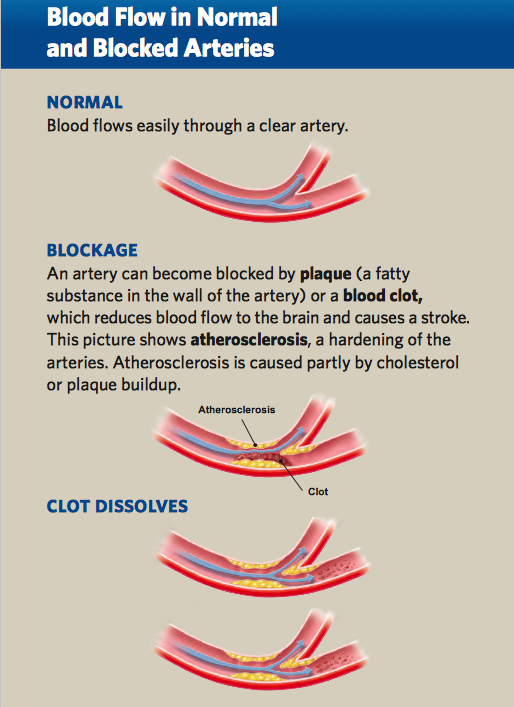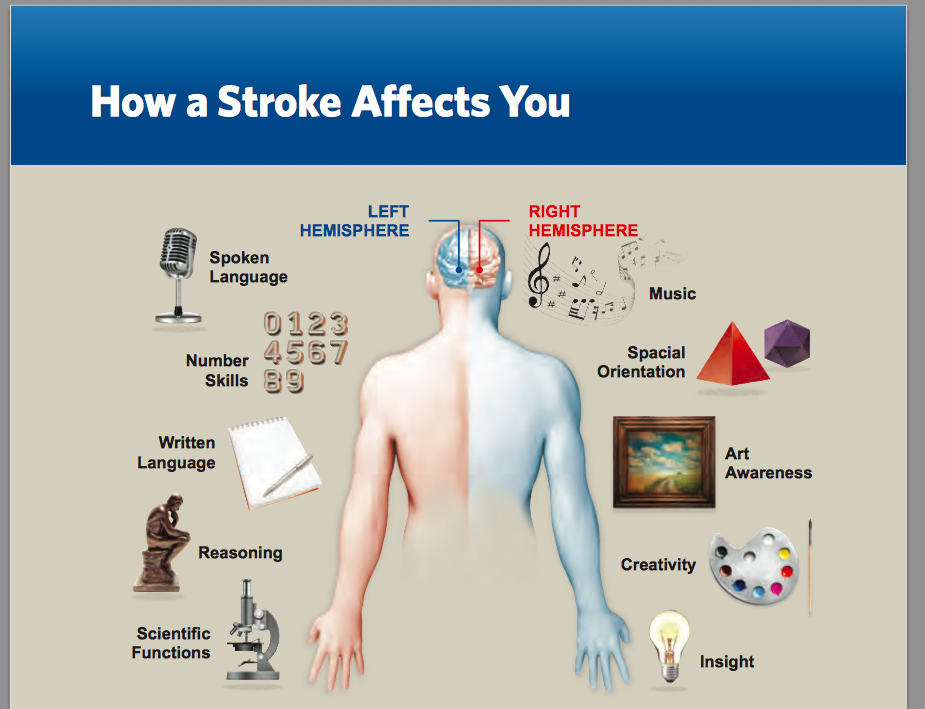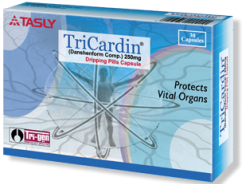Neurology & Stroke
(PRODUCT IN FOCUS: TRICARDIN)
Very Important and outstanding role of TriCardin® in Stroke and Neurology:
TriCardin® is the ONLY medication that works on several levels and improves the condition by:
- Quickly causing hematoma dissolution to reduce the pressure effects on adjacent neurons.
- Improving microcirculation for quick absorption of the dissolved hematoma.
- Inhibiting platelet aggregation and therefore further hematoma formation.
- Reducing brain edema by limiting vascular leakage.
- Reducing oxidative damage by leukocytes entering the injured site.
- Works rapidly to restore blood supply to the dying neurons and revive them, significantly decreasing the disability rate.
Recommended Dosage:
- In acute injury, i.e as the stroke is suspected or diagnosed, open 2 capsules of TriCardin® and dissolve the contents (the “dripping pills”) in 5–10 ml of water and then using a dropper carefully administer the drops under the tongue. This sublingual dosing can be used even in coma cases but avoid aspiration of the medicine into the lungs. Dosing should be 2 capsules x TID or QID, as required until the patient stabilizes. Once stable, dosing should be:
- 2 capsules x TID for one week
- 2 capsules x BID for three months
- 1 capsule x BID or TID (as required) life-long as a maintanance dose, for effective protection from relapse.
WHY TRICARDIN® ?
Brain tissue survival can be improved to some extent of one or more of the injurious processes are inhibited. Drugs that scavenge reactive oxygen species and inhibit apoptosis have been shown experimentally to reduce tissue injury due to ischemia. Since the major injury occurs at the level of microcirculation, correction and improvement of the I/R-induced microcirculatory disturbance is a reasonable strategy for preventing the subsequent neuronal death, and TriCardin® has been proved to be a promising drug in this regard.
TriCardin® is the ONLY authentic and potent medicine in the world to improve microcirculation and prevent target organ damage:
- Improves blood flow to the brain via the cerebral microvasculature
- Reduces brain edema by limiting vascular leakage
- Inhibits platelet aggregation and therefore, clot formation
- Protects the neurons from reperfusion injury of the ischemic brain
- Dissolve hematomas and emboli alike, clearing up the blockage of blood flow
- Improves microcirculation and works rapidly to restore blood supply to the dying neurons and revive them, recovering function and decreasing the disability rate
In addition, it’s potent activity as an anti-atherosclerotic, anti-arteriosclerotic, anti-hypertensive, anti-platelet, anti-coagulant, anti-thrombotic, anti-hyperlipidemic and anti-oxidant ensures health of the larger vessels as well, helping to prevent further episodes of any kind of stroke.
TriCardin® is a multifunctional drug, the timely administration of which can not only save the life of your stroke patients, but can significantly reduce their disability rate, providing them and their families with a good quality of life. So, PRESCRIBE TRICARDIN® AND WATCH YOUR PATIENTS SMILE!
Specific Actions of TriCardin®:
The biological actions of the ingredients in TriCardin® have been well established and documented, and several lines of evidence have been accumulated proving the diversity of the potential of TriCardin® in improving microcirculatory disturbance by acting on multiple targets, as given below:
- TriCardin® stimulates nitric oxide (the most potent vasodilator) production of endothelial cells by increasing endothelial nitric oxide synthase (eNOS), an enzyme that catalyzes the formation of nitric oxide from L-arginine in the presence of NADPH and O2. eNOS activates cGMP that induces smooth muscle relaxation by inhibiting calcium entry into the cells. This allows vascular smooth muscle to relax and dilate Nitric oxide contributes to vessel homeostasis by inhibiting vascular smooth muscle contraction and growth, platelet aggregation and leukocyte adhension to endothelium.
- TriCardin® inhibits platelet-derived Thromboxane A2 and B2. Thromboxane is a potent vasoconstrictor that promotes platelet aggregation. It is also a major component of a blood clot.
- TriCardin® increases endothelium-derived Prostacyclin. Prostacyclin (PGI2) chiefly prevents formation of the platelet plug involved in primary hemostasis. It is also an effective vasodilator.
- TriCardin® significantly decreases P-selectin, Gllb/llla expression and intracellular calcium in both unactivated and ADP activated platelets and inhibits platelet aggregation.
- TriCardin® dissolves performed micothrombi, interferes with extrinsic blood coagulation and exhibits antithrombin III-like activity.
- TriCardin® inhibits endothelium-derived endothlin-1, which is a potent vasoconstrictor and contributes to hypertension.
- TriCardin® inhibits angiotensin coveritng enzyme (ACE), which works via the rennin-angiotensin system to cause vasoconstriction.
- TriCardin® inhibits mast cell degranulation, thus inhibiting the release of proinflammatory mediators such as, platelet activating factor (PAF), TNF alpha, interleukins & prostaglandins.
- TriCardin® prevents oxidative damage by enhancing the efficacy and production of enzymes like superoxide dismutase (SOD), catalase (CAT) and glutathione peroxidase that destroys free radicals.
- TriCardin® inhibits the expression of L-selectin and CD11b/CD18 on leukocytes, thus inhibiting leukocyte rolling and adhesion to the vascular wall.
- TriCardin® effectively reduces the expression of adhension molecules, VCAM-1 & ICAM-1 and prevents adhension between leukocytes and endothelial cells.
- TriCardin® inhibits LDL oxidation by inhibiting 1-diphenyl-2picrylhydrazyl radicals leading to prevention of uptake of LDL by cultured macrophages, thus reducing plaque formation atherosclerosis.
Definition of Stroke:
A stroke happens when the blood supply to the brain is blocked or when a blood vessel in the brain bursts. The loss of blood to the brain means a loss of oxygen and the brains cells become injured and die. A stroke can kill or leave you with a permanent disability.
There are two types of strokes. An ischemic stroke (the most common type) happens when a blood vessel that feeds the brain gets blocked, usually from a blood clot. When the blood supply to a part of the brain is shut off, brain cells will die. The result will be the inability to carry out some of the previous functions as before like walking or talking. A hemorrhagic stroke occurs when a blood vessel within the brain bursts. The most likely cause is uncontrolled hypertension. Some effects of stroke are permanent if too many brain cells die after a stroke due to lack of blood and oxygen to the brain. These cells are never replaced.

Connection between diabetes and stroke:
If you have diabetes and hypertension (high blood pressure) you are about twice as likely to have a stroke as somebody with hypertension alone. Your risk of transient ischemic attacks is between two and six times higher than somebody who does not have diabetes.
Why Does Diabetes Often Lead to Stroke?
The connection between diabetes and stroke has to do with the way the body handles blood glucose to make energy.
Most of the food we eat is broken down into glucose to give us energy. Glucose enters the bloodstream and travels to cells throughout the body after food is digested. In order for glucose to actually enter cells and provide energy, it needs a hormone called insulin.
It is the pancreas’s job to produce this insulin in the right amounts. In people who have diabetes, the pancreas does not make insulin (Type 1 diabetes), or it makes too little insulin or the cells in the muscles, liver and fat do not use insulin the right way (Type 2 diabetes).
What happens then is people with diabetes end up with too much glucose in their blood, while their cells don’t receive enough energy. Over time, this glucose can lead to increased fatty deposits or clots on the insides of the blood vessel walls. These clots can narrow or block the blood vessels in the brain or neck, cutting off the blood supply, stopping oxygen from getting to the brain and causing a stroke.
How does high blood pressure increase stroke risk?
Uncontrolled high blood pressure increases a person's stroke risk by 4 to 6 times. It may:
- thicken the artery walls, causing cholesterol or other fat-like substances called plaque to build up. The plaque build up can then break off of artery walls causing a clot and blocking blood flow to the brain, which may cause a type of stroke called an ischemic stroke
- weaken the artery walls, leading blood vessels to break and bleed into the brain, causing what is called a hemorrhagic stroke
Know the symptoms of stroke!
- Sudden numbness or weakness of face, arm or leg - especially on one side of the body
- Sudden confusion, trouble speaking or understanding
- Sudden trouble seeing in one or both eyes
- Sudden trouble walking, dizziness, loss of balance or coordination
- Sudden severe headache with no known cause



.JPG)